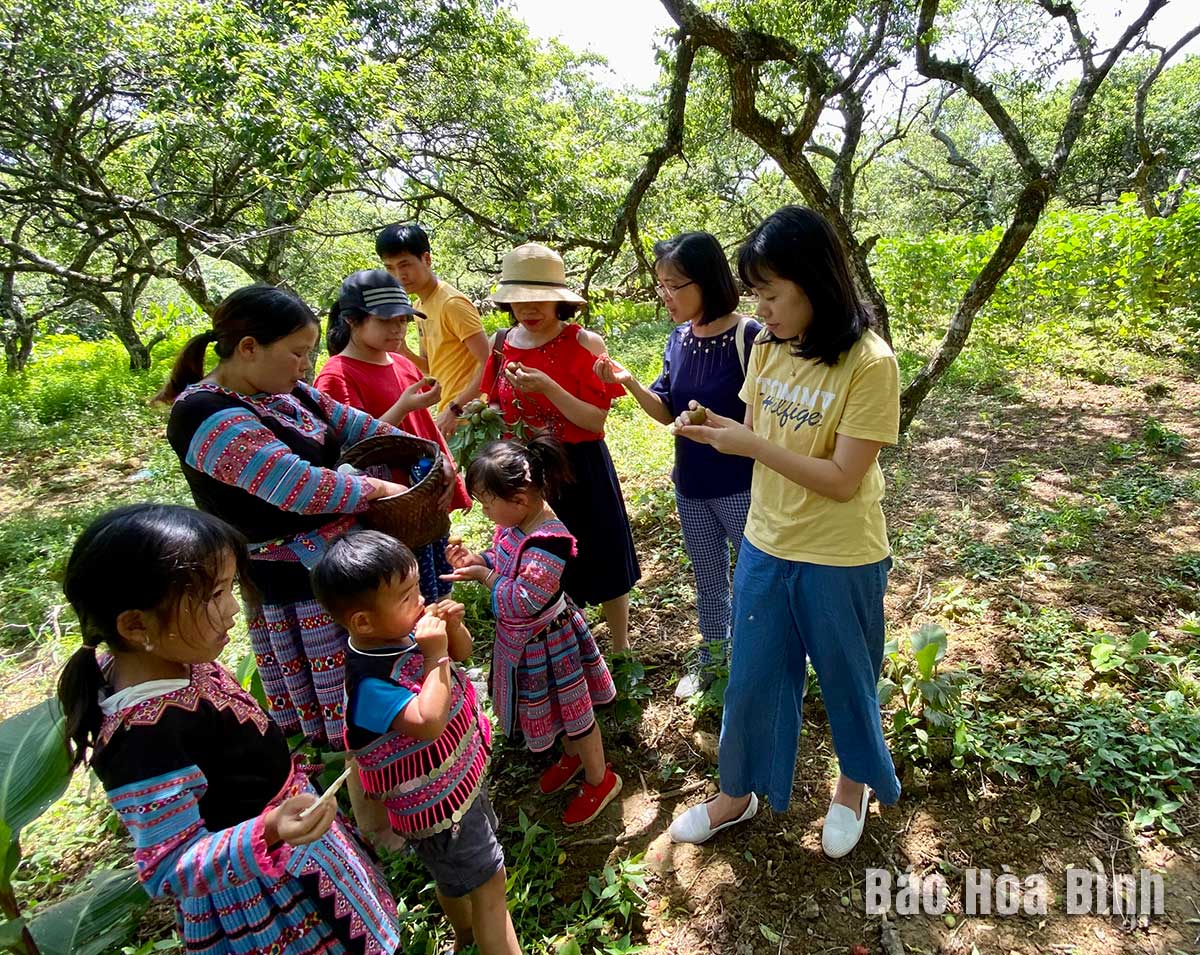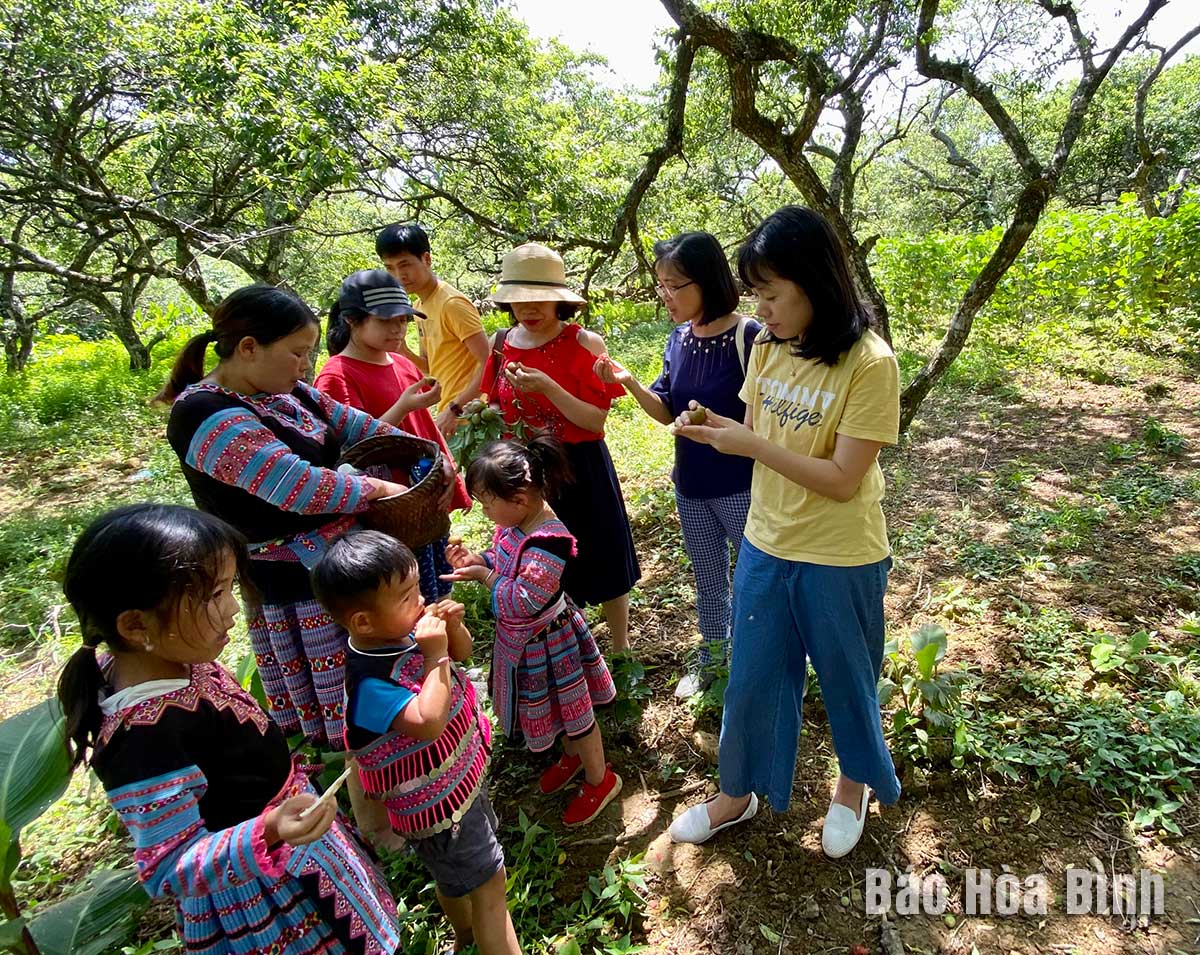
In the aesthetic concept of the Mong people, a woman's beauty is partly reflected through her clothes. In Mai Chau district, there are two communes inhabited by the Mong ethnic people, namely Hang Kia and Pa Co, with a combined population of over 6,000. Despite the strong development of the society, the cultural identity, notably traditional costumes, of local people is still preserved and promoted.
![]()

Mong ethnic costumes are regularly
used by locals, contributing to the attractiveness of community-based tourism
in Pa Co commune (Mai Chau).
As a local, besides working as a preschool
teacher, Sung Y Do in Cha Day hamlet, Pa Co commune, is also very passionate
about preserving traditional culture, especially linen weaving, fabric dyeing,
sewing, and embroidering costumes. She also shows her love for ethnic costumes
through her habit of wearing them at school and in her daily life.
In recent years, thanks to the promotion of
potential and strengths of natural resources and human resources, the two
communes have become attractive destinations for domestic and foreign tourists.
Local Party committees and authorities have paid attention to maintaining the
organisation of festivals and cultural, art and sport activities to attract
locals to preserving cultural identity and ethnic costumes associated with
promoting community-based tourism development.
As a result, people use traditional
costumes more and more commonly. Many Mong women still wear traditional dresses
while working. On market days, holidays, and Tet, people wear their best
outfits to go out to festivals. In Pa Co commune, there is a traditional
brocade weaving village that maintains its activities, helping visitors
experience stages of making costumes. Another interesting destination in the
commune is Mong Space, Cha Day hamlet, where many traditional costumes that
have been used for hundreds of years are on display to introduce and promote
their beauty, and gradually turn the costumes of the Mong ethnic people in Mai
Chau district into a unique tourism product.
Gongs hold a special place in the cultural and spiritual life of the Muong ethnic people in Hoa Binh province. More than musical instruments, they are an indispensable part of community rituals and collective memory, echoing through generations as a spiritual thread linking the past, present, and future.
Preserving and promoting the cultural values of the Muong ethnic group has become an urgent task in the current context, as many traditional values face the risk of fading away. This effort requires not only protecting the cultural identity but also eliminating outdated customs and developing a modern cultural lifestyle, contributing to sustainable values for the Muong community in Hoa Binh province.
The Muong ethnic culture, deeply rooted in Vietnam’s mountainous north, continues to be preserved and revitalised by dedicated individuals and communities determined to safeguard their ancestral identity.
The Muong group is one of the largest ethnic minorities in Vietnam, primarily found in Hoa Binh province. The Muong people in Hoa Binh boast a rich and diverse cultural treasure that reflects the unique identity of this ethnic group. Accounting for over 63% of the province's population, they have created and preserved numerous distinctive cultural values, contributing to their unique identity. Their cultural heritage is an invaluable asset, at the heart of their national identity, and represents a vibrant spiritual life that must be preserved and promoted in today’s modern world.
For generations, the ethnic communities of Hoa Binh province, particularly the Muong people, have preserved vibrant festivals deeply intertwined with the region’s geography, nature, and social traditions. These celebrations enrich Hoa Binh’s spiritual life and cultural identity, reflecting both folk beliefs and the intermingling of ethnic customs. Many of these festivals have endured the test of time, passed down through generations and continuing to thrive today. Among them, the Khai Ha (Going Down to the Field) festival stands out as one of the most significant events of the Muong ethnic group.
Muong calendar, known as sach doi, is an ancient folk knowledge system developed through observations of the movement of the pleiades star. This unique calendar consists of 12 bamboo sticks, each representing a lunar month. Specific days within each month are marked with distinct symbols, guiding locals in determining auspicious and inauspicious days for important activities.



